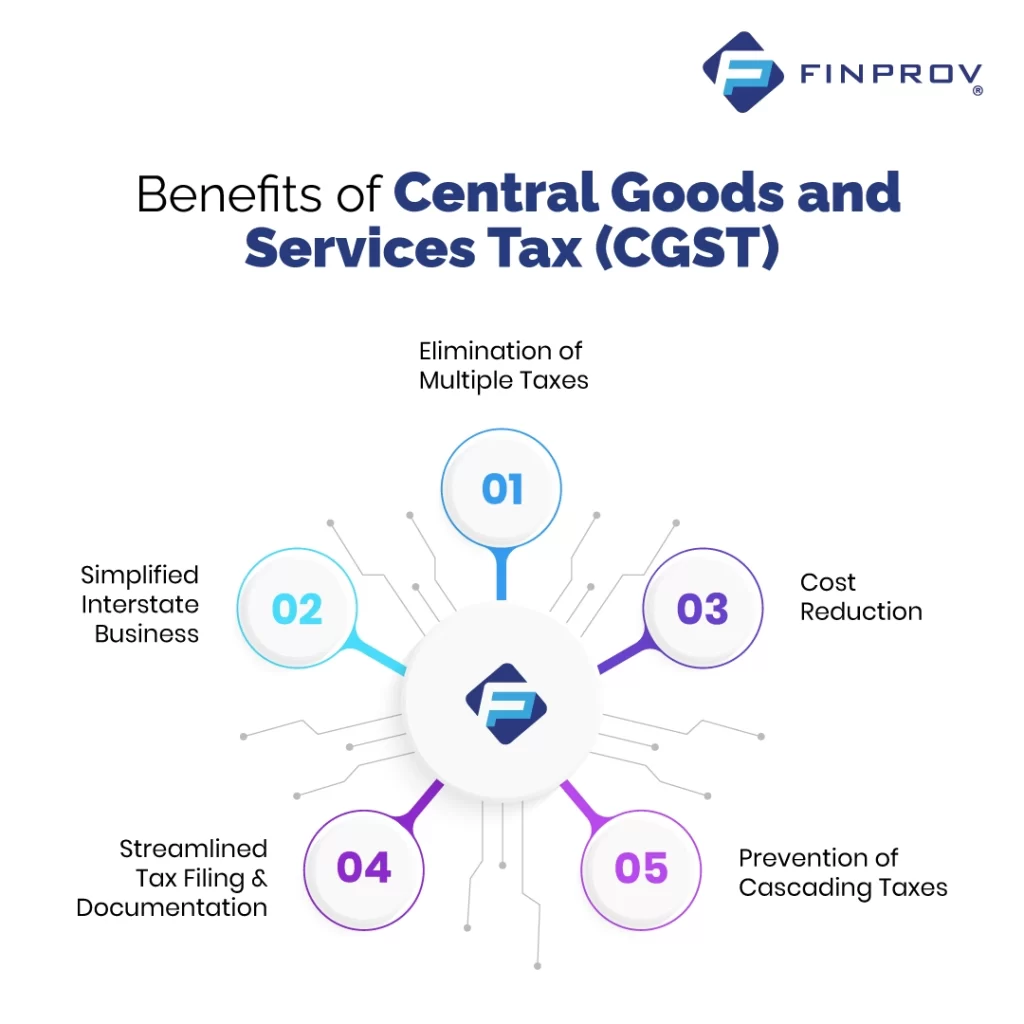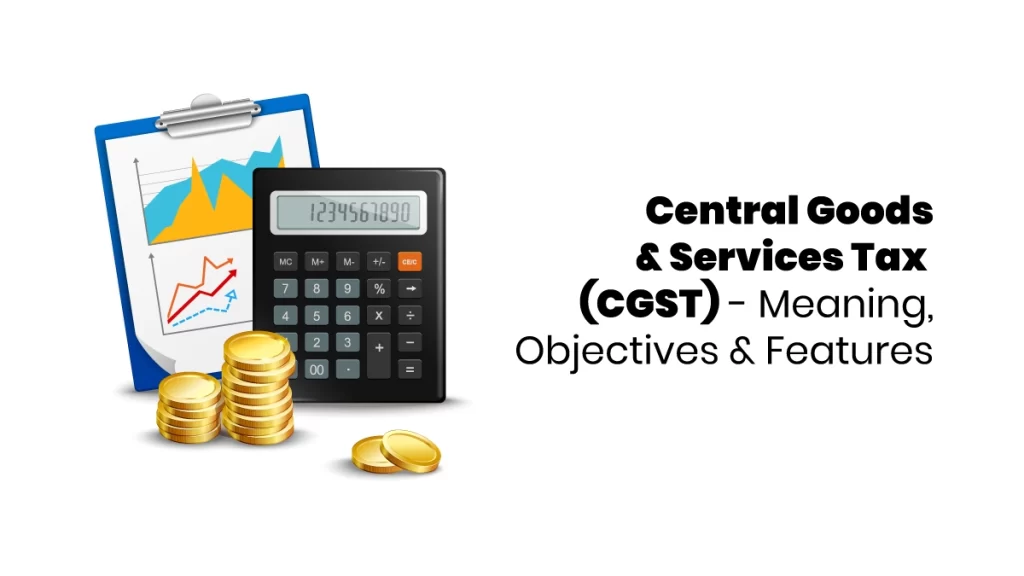The Goods and Services Tax (GST) concept underwent several considerations by different governments in India before it was eventually implemented on July 1, 2017. The primary objective behind introducing GST was establishing a ‘One Nation One Tax’ system. GST effectively assimilated and replaced all the diverse taxes that were previously in existence across the country, categorizing them under:
- Central Goods and Services Tax (CGST) absorbed all the taxes imposed by the central government, such as foremost excise duty, mid surcharges, cess, and other indirect taxes.
- State Goods and Services Tax (SGST) replaced state-level taxes like VAT, sales tax, state cesses, surcharges, and other indirect taxes.
- Integrated Goods and Services Tax (IGST) involves the interstate movement of goods and services, ensuring a uniform tax rate for transactions across state borders.
However, certain products and services remain outside the scope of GST. These include alcohol, petrol, diesel, natural gas, airline fuel, wages and salary, electricity, and others. While some items, like alcohol, are excluded to regulate consumption, petrol continues to be a significant source of revenue for the states.
History of CGST
Established under the Central Goods and Services Tax Act of 2016, the CGST Act amalgamated several indirect taxes. These included central sales tax, central excise duty, service tax, additional customs duties, and other excise duties. CGST is imposed on the interstate movement of goods and commodities and can be adjusted by a distinct authority. While the central government collects revenue through CGST, states can claim input tax credits for CGST.
Objectives of the CGST
The implementation of the CGST Act in 2017 aimed to achieve several key objectives:
- Before GST, central and state governments imposed different taxes on the same products and services, leading to double taxation issues for manufacturers and supply chain stakeholders.
- Double taxation contributed to high rates of tax evasion and cascading effects in the tax system, which the GST aimed to address.
- The presence of octroi, entry tax, check posts, and other barriers hampered the free trade flow across the country, resulting in additional taxation for transporting goods and services between states.
- The multiplicity of taxes imposed a higher compliance burden on taxpayers, making the taxation system more complex.
The GST was introduced on July 1, 2017, to overcome these challenges and promote free trade. It involved the central government levying taxes in the form of CGST while states implemented SGST.
Features of the CGST Act 2017
The Central Goods and Services Tax (CGST) Act 2017 boasts several notable features. Below are some critical aspects of the CGST:
- CGST applies to all intra-state transactions of goods and services.
- It broadens the scope of input tax credit, ensuring that taxes paid on the supply of goods and services are available for offset.
- Taxpayers can self-assess and determine the taxes they owe under CGST.
- The CGST framework includes provisions for conducting audits aiding taxpayers in complying with the Act’s regulations.
- In the event of taxpayer default, CGST has mechanisms for recovering tax arrears, including detaining and restricting the sale of goods and property.
- Provisions within CGST allow for imposing penalties or fines in cases of non-compliance by taxpayers.
- CGST reduces the overall tax burden on various consumer goods and services.
CGST Rules
Here are the standard rules under the CGST Act:
- Tax invoices must be issued for taxable goods and services when you are already registered for GST.
- A bill of supply is issued if registered under the GST composition scheme.
- All invoices should have unique serial numbers and be noted sequentially.
- Ensure that GST invoices include your name, address, supply place, and GSTIN.
- CGST and SGST are filed equally, meaning that if the GST rate is 18%, CGST is 9%, and SGST is 9%.
- For sales involving out-of-state businesses, IGST must be levied.
- It’s advisable to refrain from buying goods or services from unregistered dealers.
- Ensure you file GST correctly for intra and interstate sales.
- A tax invoice must accompany all sales of taxable goods and services.
- Collect tax invoices for all your purchases.
- Ensure that your documents include your and the client’s GSTIN.
- Submit all required documents on time to avoid penalties.
Documents Required for CGST Registration vary based on the category of Taxpayers
- Owner’s PAN Card
- Owner’s Aadhaar Card
- Owner’s photograph
- Residential Proof
- Details of Bank Account
Benefits of Central Goods and Services Tax (CGST)

- Elimination of Multiple Taxes: CGST replaced the previous system where the Centre and states imposed different tax rates on the same goods and services. This consolidation eliminated the burden of multiple taxes on goods and services.
- Cost Reduction: CGST has contributed to reducing the costs of goods and services, resulting in consumer savings.
- Simplified Interstate Business: The uniformity of CGST across all states simplifies interstate business operations, eliminating concerns about varying tax rates.
- Streamlined Tax Filing and Documentation: CGST has streamlined tax filing and documentation processes, making compliance more efficient and hassle-free for businesses.
- Prevention of Cascading Taxes: By taxing based on the margin price only, CGST has effectively prevented the cascading effect of taxation, benefiting the overall tax structure in India.
Enrolling in a GST certification course can significantly enhance your proficiency in efficiently managing GST accounting software for businesses. Finprov, a reputable institute, offers a comprehensive GST certification program that provides learners an in-depth understanding of GST principles and practices substantiated by real-world examples. This course suits graduates, Chartered Accountants, company secretaries, finance and tax professionals, and individuals seeking career opportunities.
The GST certification course offered by Finprov covers a range of crucial topics, including the fundamentals of GST, Input Tax Credit, Composition Scheme, GST return filing, E-way bill, Time of Supply, Place of Supply, Reverse Charge Mechanism, and more. It caters to the learning needs of graduates and professionals looking to expand their expertise in accounting and finance. By selecting Finprov for your GST certification course, you can access quality education and valuable, highly relevant insights in these domains.





















